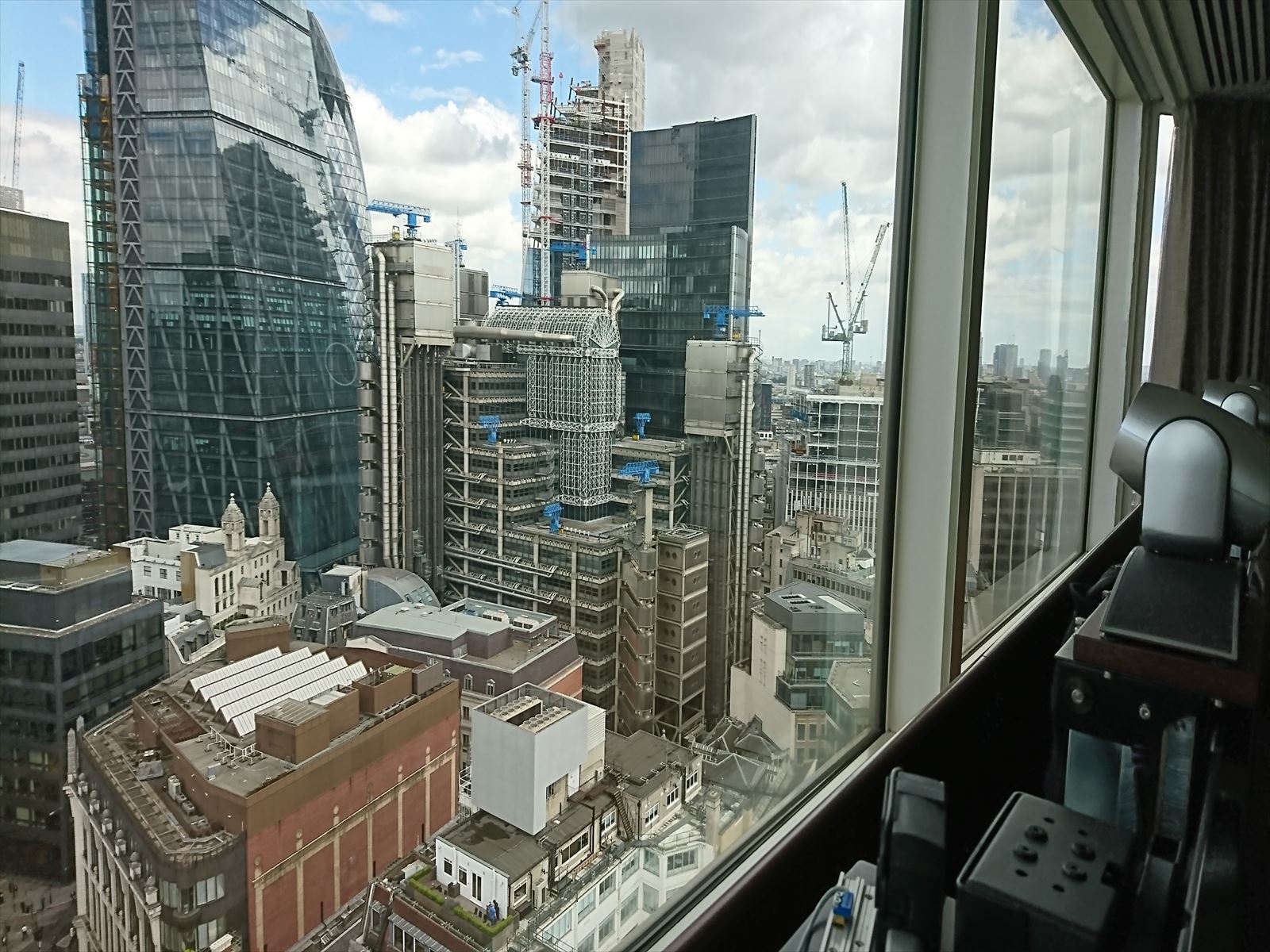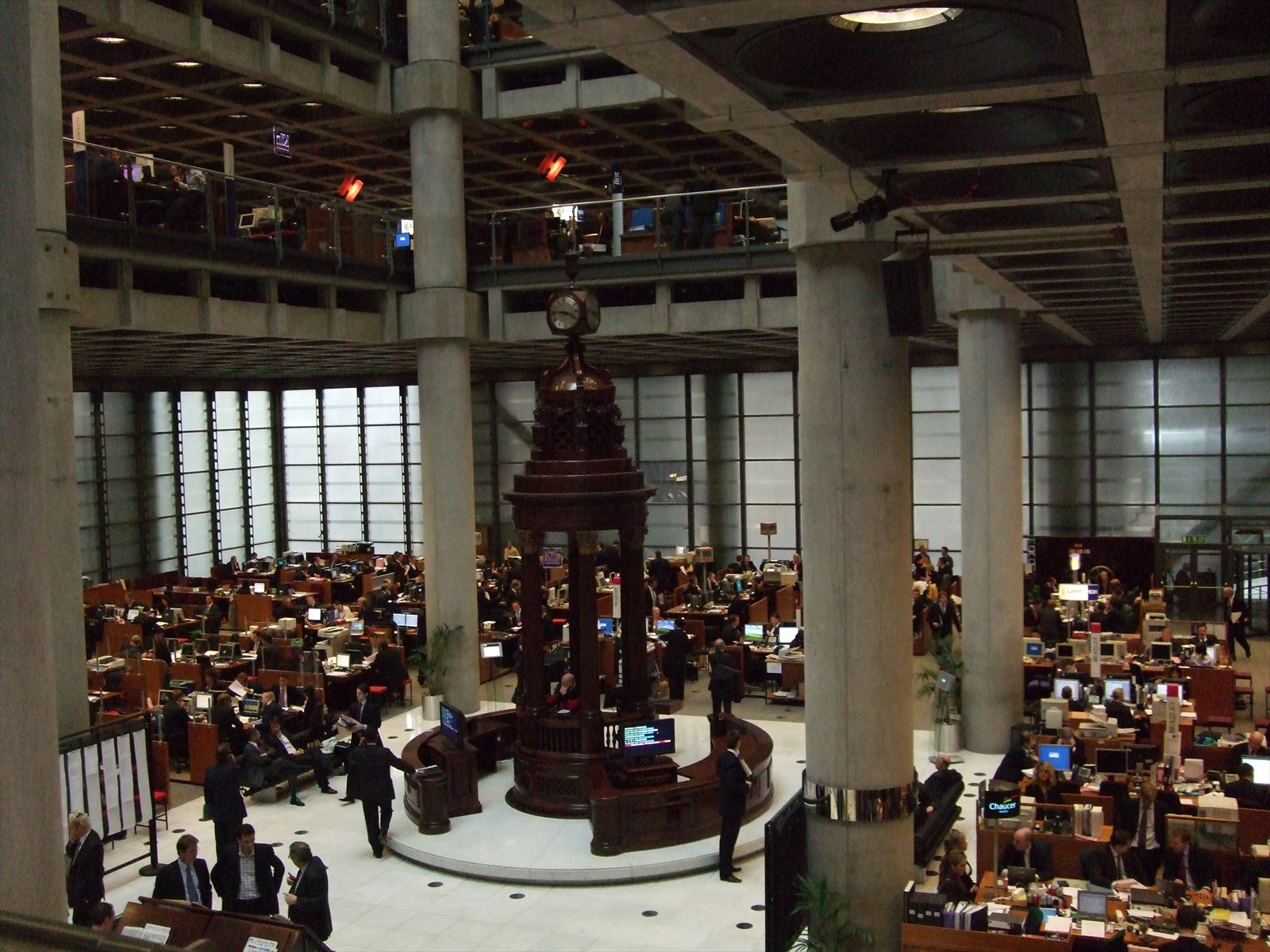リスク対応策 2020.01.31
RM 3 ロンドン大火 The Great Fire of London
目次
Copyright © Shinichiro Hatani 2020 All rights reserved
For those who prefer to read this column in English, the Japanese text is followed by a British English translation, so please scroll down to the bottom of the Japanese text.
キャプティブからの再保険の手配のため、提携している保険ブローカー、再保険会社との打ち合わせのために足繁く通う街、英国、ロンドン。
その街を1666年大火が襲った。現在では、米国のウオール・ストリートとならび「国際金融街」として有名な「シティ」と言われる一角に通じる地下鉄の駅の1つにモニュメント駅がある。
モニュメント駅に降り立つと、その駅前には、まさにその名のとおり、モニュメント(記念碑)、「ロンドン大火記念塔」がある。高さは、その場所から火元とされた「パン屋」までの距離と同じ62m。実に4日間、「街を焼き尽くす勢いであった」とその壁面のレリーフには彫り込まれている。
1.ロイズ
その駅から、歩いて2,3分の場所に、保険で有名な「ロイズ」がある。保険関係者にとっては、「メッカ」のような場所である。1688年頃、エドワード・ロイドが、当時の社交場としてもてはやされていた「コーヒーハウス」を開いた。テムズ川沿いであったため、海運業者らが集まる場所として有名になった。
当時、保険会社は存在せず、商人が保険を引き受け、「ブローカー」と呼ばれた使用人が、他の商人の間を持ちまわって、共同で保険を引き受けていた。保険を引き受ける富裕者が集まって「シンジケート」と呼ばれる集団引受組織がブローカーの仲介によって、他のシンジケートとともに引き受けしてリスク分散を図る、現在のロイズの淵源がここにある。
「One Lime Street(ライム・ストリート1番地)」と通称される「ロイズ(Lloyd’s of London)ビル」、その正面玄関の入り口には、「大型の自動回転扉」がある、どこでもほんの少しでも触れるとすぐ止まる、またその傍には警備を兼ねたスタッフ2名が不測の事態が起きないようにいつも目を光らせている。

2.リスクへの感性―自動回転扉の事故
リスクマネジメントは、企業経営に大きな影響を与える存在である、「リスクを、如何に的確に、予測、分析、対応していくか、そのためには、リスクマネジメントをおこなう人、組織の感性が強く関わってくる」と考える。
よく知られたことであるが、リスクマネジメントをおこなう方法には二つある。「リスクを排除する」方法、そして「リスクを保持する」方法である。しかし、ここで最も重要なことは、その根本「リスクをリスクとして認識しなくては、リスクマネジメントのスタートはそもそも存在しない」ということである。
15年ほど前、「自動回転扉」の事故が、東京のある大きなビルで起き、母親と観光に訪れていた、6歳男児の尊い小さな命を奪った。その後の裁判で明らかにされたが、そのビルでは、オープンしてからこの事故までの1年弱に、大型回転ドア12件、小型回転ドア10件の事故が発生していた。しかも大型回転ドアのうち7件はいずれも8歳以下の子供が体を挟まれたものでこの事故と同じであったが、駆け込みを防止するための簡易ポールを立てるなどの簡便な対応で終わっていた。また、全国の様々なビルでも同様の事故が起きていた。その尊い犠牲によって、初めて大きく報道され、その「リスクの存在」に企業は、人々は、気が付いた。
ロイズ・ビルの例を引くまでもなく、リスクマネジメントの発想が浸透した欧米では、製造者だけでなく、使用者側も安全性を最優先にして、その仕様と対応を決めている。「菓子折り」では済まされない、長い訴訟の歴史がその背景にあるからである。
何かが起きないと気付かない、考えない企業が多いと言われる。事故が起きた、損害が発生した、そしてそれが「経営を揺るがす事態になって初めて経営はリスクを感じる」、これでいいのだろうか、それでは「取り返しのない状態になって初めて対応策が捻出されようとする」が、それでは既に時期を逸していることはだれの目にも明らかであろう。
3.リスクの連鎖
この事故は「潜在化していたリスクが、あるとき何かを引き金にして顕われてきた結果」である。しかし、この事故は、「結果」であると同時に、更に別の事象の「原因」、「リスク」に自分の姿を変容させているのである。「管理責任に関するリスク」にである。
ひとつの事故によって、企業全体としての管理責任が問われる。その管理責任が経営責任へ波及する「可能性」、これが「リスク」である。管理責任というリスクが、事故を「媒介」にして、「企業の経営責任が問われる」という、更に大きなリスクへ変容していくのである。これがリスクの怖さであり、この連鎖を予測する、リスクへの感性がリスクマネジメントをおこなう人、組織には、強く求められるのである。
このようなケース、「経営責任リスク」が問われた際に有効なソリューションとして、会社役員賠償責任保険(D&O保険)がある。「経営責任リスク」に対応するために、そのリスクを「排除」しようとして、「どこにも指を刺されない経営を」と役員の啓蒙に励んでも、何が起きるかわからない、では「保持」しようと、保険をつける、「これで安心」。これが一般的なリスクマネジメントである。
欧米の企業には必ず存在する「リスクマネージャー」、その職責と同様の職責を日本の企業のなかで有する人、リスクマネジメント部門がこのような発想を持たない場合、つまり「リスクをリスクとして認識する感性を持たない場合」、リスクマネジメントは根底から揺らぎ、その意味を成さない。
「保険があるから大丈夫」ではなく、「保険の中身はリスクに対応したソリューションになっているのだろうか」、「保険のなかにも、リスクが存在するはず」、そう考える感性が、また、そう考えるべき専門職、「リスクマネージャー」が求められる時代に日本もなってきたのである。
今回のまとめ
欧米のリスクマネージャーは「保険会社の限界を知っている」ものである、彼らの多くが保険会社出身だからである。したがって、多くのリスクマネージャーは「自前の保険会社=キャプティブ」を持ちたいと考える。「自社特有のリスク」への対応、また「自社のみを考えるリスクマネジメント」を遂行することが職務だからである。
キャプティブのメリットを更に活かす仕組みも、優越性のある再保険の手配と獲得を通して初めて可能となる。こういう点からも、キャプティブの設立のためには相当な専門性が必要になる。「とりあえずキャプティブはつくったけど、さて、さて、キャプティブのメリットを活かせていける運営ができるのか」とならないように、本物の専門家の指導がキャプティブの設立、運営管理には必須である。その専門的なアドバイスがあってこそ、キャプティブ設立のメリットを最大限に活かすことができると考えるからである。
執筆・翻訳者:羽谷 信一郎
English Translation
Risk Management 3 – The Great Fire of London
For meeting with our partner insurance brokers and reinsurers to arrange for reinsurance from the captive, London, England, a city London, England, is a city I’ve frequented.
The Great Fire of 1666 struck that city. Today, Monument Station is located at one of the subway stations that lead to the corner of the City, now known as the “International Financial District” along with Wall Street in the United States.
In front of the station, as the name implies, there is a monument, the Great Fire of London Memorial, which is located in front of the station. It is 62 meters high, the same height as the distance from the site to the alleged bakery where the fire started, and indeed, for four days, “the fire was so fierce that it burned the city to the ground,” according to the carved relief on the wall.
1. The Lloyd’s of London
A couple of minutes’ walk from the station is Lloyd’s of London, a famous insurance in insurance. Around 1688, Edward Lloyd opened a coffee house, a popular social gathering place in those days. Because of its location on the Thames, it became famous as a gathering place for shipping companies.
There were no insurance companies at the time, but merchants underwrote insurance policies, and servants, called “brokers”, shared the insurance with other merchants. This is the origin of today’s Lloyd’s of London, where a group underwriting organization called a “syndicate” of wealthy people who underwrite together with other syndicates through the intermediary of a broker to diversify risk.
The Lloyd’s of London building, commonly known as “One Lime Street,” has a large, automatic revolving door at its main entrance that stops at the slightest touch, and two security staff members are always on hand to prevent any unforeseen problems.
2. Sensitivity to risk – accidents with automatic revolving doors
Risk management has a great impact on corporate management. How to accurately predict, analyze, and respond to risk is strongly dependent on the sensitivity of the people and organizations involved in risk management.
It is well known that there are two ways to conduct risk management: eliminating risk and retaining risk. However, the most important point here is that, unless we recognize risk as a risk, there is no way to start risk management in the first place.
About 15 years ago, an accident involving an “automatic revolving door” took the precious little life of a six-year-old boy who was sightseeing with his mother in a large building in Tokyo. It was later revealed in court that in the year or so since the building opened, there had been 12 incidents of large revolving doors and 10 incidents of small revolving doors in the building between the time it opened and the accident. In seven of the large revolving doors, a child under the age of eight was trapped between the doors, just as in this case, but the response was simple, such as setting up a simple pole to prevent a run-in. Similar accidents had also occurred in various buildings across the country. The noble sacrifice made it widely reported for the first time, and the companies, and people, realised that the “risk existed”.
In the West, where the concept of risk management has become so widespread, not only the manufacturers but also the users are making safety a top priority in their specifications and responses, not to mention the Lloyd’s of London Building example.
It’s a long history of litigation that goes well beyond “candy folding”.
It is said that many companies don’t realize or think about it until something happens. Only when an accident occurs, when damage is caused, and when it shakes up the business will the management feel the risk.
3. The Chain of Risks
This accident is the “result of a latent risk that was triggered by something else”. However, at the same time as this accident is a “result”, it also transforms itself into a “cause” or “risk” of another event.: The risk of management responsibility.
A single accident can lead to a company’s responsibility for management as a whole. The risk is the “possibility” that such responsibility will spill over to the company management team’s responsibility.The risk of managerial responsibility becomes an even bigger risk, with accidents serving as a medium through which a company’s management responsibility is questioned. This is the fear of risk, and the people and organizations that manage risk must be sensitive to the risk and be able to predict this chain of events.
D&O insurance is an effective solution for cases like this where management liability risk is involved. Even though the company tries to eliminate management liability risk and educate its directors and officers about how to manage their business without being fingered, there is no way to know what will happen, so the company takes out insurance to maintain the risk and to provide peace of mind. This is the general approach to risk management.
If a Japanese company’s risk management department does not have this kind of concept, that is, if it does not have the sensitivity to recognize risk as a risk, risk management will be shaken to its foundations and will not be meaningful.
This is not a matter of just saying “we have insurance, so we’ll be fine.” Rather, it is a matter of wondering whether the insurance is a solution for the risks, and whether there are risks in the insurance, and we have entered an era in which Japan needs to have the sensitivity to think like that, and a professional risk manager who should think like that.
Summary of this issue
Western risk managers “know the limits of insurance companies”, because many of them come from insurance companies. Therefore, many risk managers want to have a “captive” (i.e., their own insurance company). This is because their duty is to respond to risks specific to their company and to carry out risk management that considers only their company.
A mechanism to further leverage the benefits of a captive is only possible through the arrangement and acquisition of superior reinsurance. In this respect, the establishment of a captive requires a great deal of expertise. Genuine expert guidance is essential for the establishment and operational management of a captive, so that it does not become “we’ve created a captive for now, but now, can we manage it to take advantage of the benefits of the captive?” This is because we believe that only with such expert advice can we make the most of the benefits of establishing a captive.
Author/translator: Shinichiro Hatani

